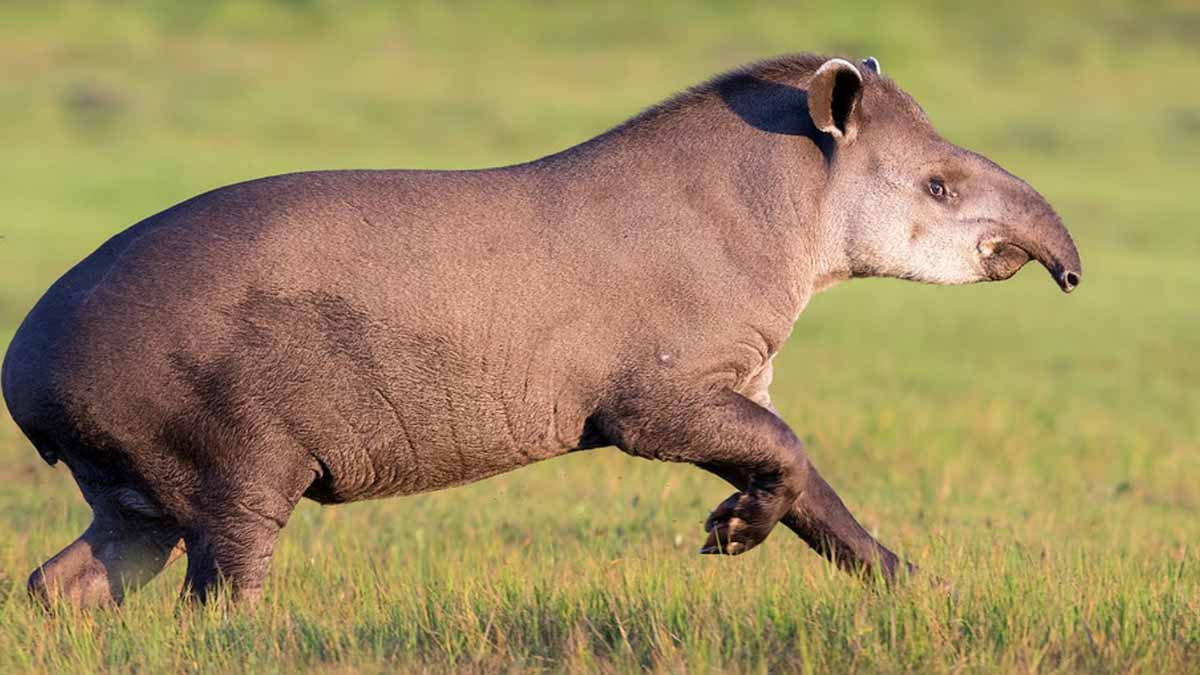For a century, the world watched and wondered if a giant still moved unseen. Now, a quiet return reshapes expectations, challenges doubt, and energizes conservation with compelling proof. This moment begins with images, patient science, and vigilant stewardship around a legendary mammal. What follows traces the clues, the safeguards, and the people whose steady work helped a long-missing presence step back into view, reminding us that recovery can bloom when habitat, time, and care align.
A century-long return captured by 108 images
Wildlife cameras documented a landmark comeback: 108 photos and videos reveal three individuals moving through dense Atlantic Forest. The sequence includes a mother with her calf, confirming reproduction and residency. Each frame validates renewed presence and tracks behavior typical of a large forest mammal, recorded without disturbance across multiple days.
The observations come from Cunhambebe State Park, a 38,000-hectare protected area created in 2008. Its mosaic spans Angra dos Reis, Rio Claro, Itaguaí, and Mangaratiba, sheltering threatened fauna and vital watersheds. Within this refuge, elusive giants found cover, food, and quiet corridors, allowing camera traps to register consistent movement reliably.
Before these confirmations, the region had no verified record since 1914, when one was noted in Serra dos Órgãos National Park. Urban expansion and hunting pressure emptied the forests and forced retreat, pushing the species toward endangered status. This evidence decisively resets the timeline and restores ecological expectations for recovery.
Why this mammal matters to a fragile forest
This species acts as a forest gardener. By eating fruits, leaves, and shoots, it transports seeds and drops them with natural fertilizer, boosting germination far from parent trees. That service rebuilds structure, diversifies understory, and spreads hardy pioneers that stabilize soil, shade seedlings, and feed countless invertebrates and forest birds.
The Atlantic Forest ranks among Earth’s richest yet most fragmented biomes. Fragmentation isolates wildlife, weakens gene flow, and reduces resilience. Large herbivores reconnect ecological processes across distances. Using refuges, riparian corridors, and quiet valleys, they knit patches together, helping pollinators, predators, and plants function as one living network again today.
Healthier forests protect people as well. Restored vegetation stores carbon, steadies slopes, and safeguards headwaters that feed towns. Seed dispersal sustains fruiting species prized by fauna, guiding tourism and research. When keystone herbivores return, ecosystems absorb shocks better, supporting livelihoods with cleaner water, cooler microclimates, and enduring, irreplaceable natural heritage.
From disappearance to protection: dates, pressures, and places
Historic context frames the magnitude. No confirmed record existed locally after 1914, when a sighting came from Serra dos Órgãos National Park. Decades of urban expansion, road building, and hunting displaced a wary mammal. Populations contracted and fragmented, pushing the species toward threatened status within shrinking, isolated forest remnants nearby.
Protection strengthened in 2008 with the creation of Cunhambebe State Park. Its 38,000 hectares span Rio de Janeiro’s Angra dos Reis, Rio Claro, Itaguaí, and Mangaratiba. This scale supports springs, valleys, and forest blocks big enough to hide shy fauna and buffer them from roads, noise, dogs, and nearby development.
According to INEA, the find underscores how protected areas and focused conservation revive iconic wildlife. Cunhambebe’s management now anchors regional biodiversity and stabilizes ecological processes. With legal status, rangers, and science partnerships, the park gives threatened species room to move, feed, and reproduce, converting policy into tangible, measurable ecological gains.
Behind the images: partnerships, cameras, and how a mammal reappears
The rediscovery emerged from cooperation. INEA teamed with Vale on a monitoring program that placed camera traps along trails, salt licks, and crossings. Those devices recorded time, date, and movement without harassment, creating a sequence that documented individuals, size, behavior, and family structure with clarity impossible during brief human encounters.
Revista Fórum, citing Agência Brasil, reported a cache of 108 images confirming at least three individuals within park boundaries. Among them, a mother and calf signal reproduction, not transient passage. Angles, locations, and timestamps demonstrate repeated habitat use, strengthening confidence that residency, foraging, and resting now occur across forest sectors.
As the park noted on Instagram, PEC safeguards threatened species while maintaining essential processes: seed dispersal, population regulation, and genetic diversity. These functions recover when large herbivores move safely through valleys and ridges. Monitoring now guides management, from patrol routes to restoration plantings and seasonal access rules that reduce disturbance.
What recovery needs next : corridors, science, and community buy-in
Sustained progress depends on connected habitat. Restoration can widen riparian buffers, replant edges, and secure easements that join forest patches into ecological corridors. Underpasses, signage, and speed management reduce roadkill. These steps help a wide-ranging mammal move safely while also benefiting predators, pollinators, and plants that rely on undisturbed routes.
Research should track genetics, health, and movement. Scat studies reveal diet and seed viability; telemetry clarifies home ranges and seasonal paths. Citizen science expands detection, while local communities share observations and report threats promptly. Together, data and stewardship turn an exciting rediscovery into durable population trends with clear, transparent milestones.
Governance must match ambition. Stable funding, trained rangers, and community partnerships keep restoration alive through political cycles. Corporate allies like Vale can support monitoring and restoration, while agencies coordinate enforcement and planning. Clear metrics, periodic reporting, and open data maintain trust, attract donors, and guide adaptive management across future years.
A rare comeback that resets hopes and responsibilities for conservation
This return closes a century of doubt and opens a new chapter for stewardship. Proof gathered patiently shows what protection, time, and collaboration can restore. The task now is steadiness: expand corridors, defend refuges, and keep monitoring honest. With habitats linked and communities involved, a resilient future becomes possible for forest life and for a singular mammal whose quiet work sustains the landscape that sustains us. Hope grows when commitment endures and results guide every next step.
